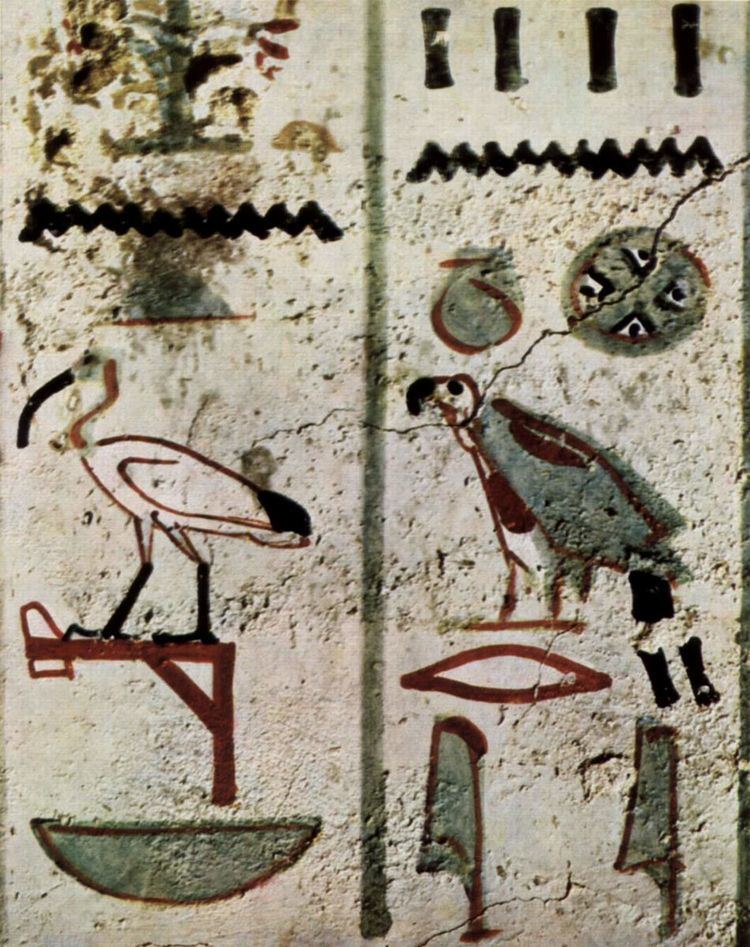 | ||
The Ancient Egyptian Townsite-city-region (hieroglyph) is Gardiner sign listed no. O49 for the intersection of a town's streets. In some Egyptian hieroglyphs books it is called a City Plan.
Contents
It is used in Egyptian hieroglyphs as a determinative in the names of town or city placenames. Also, as an ideogram in the Egyptian word "city", niwt.
Origin and history
Betrò uses the Libyan Palette as her extensive explanation of the City Plan. The Libyan Palette contains seven cities, fortress-protected; the seven cities are identified inside an approximate–circular–enclosure with iconography, with some signs to become hieroglyphs, and similarly identified externally with the similar hieroglyphic iconography, also to be used as hieroglyphs. (see list: Libyan Palette)
Fortress hieroglyph and the Nine Bows
The fortress (hieroglyph) iconography was still being used in Ramesses II's time to identify placenames of defeated locations, referring to the Nine bows. The fortress hieroglyph is shown in three non-Gardiner's sign listed forms-(all vertical); the category is Buildings and Parts of Buildings.
